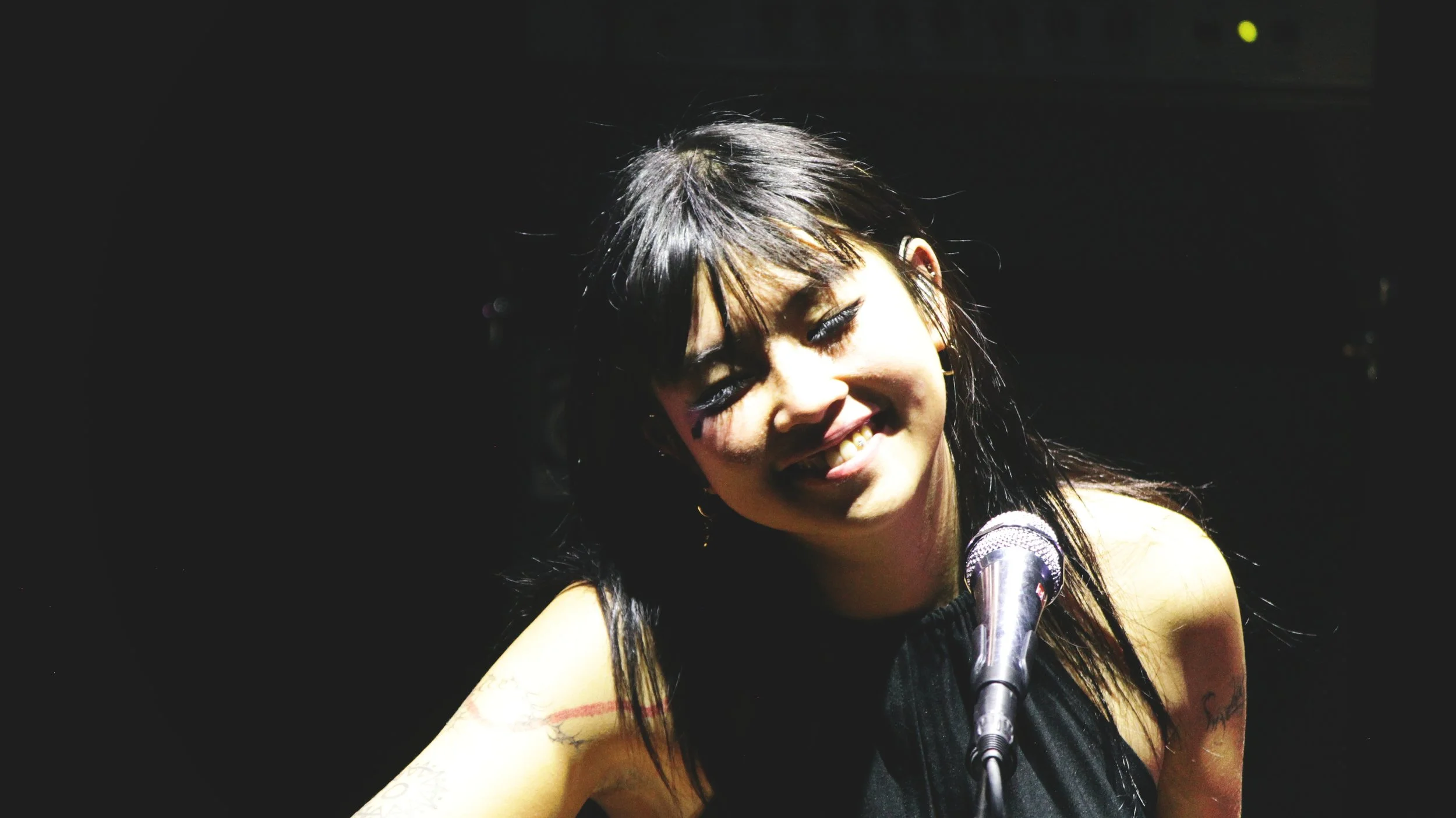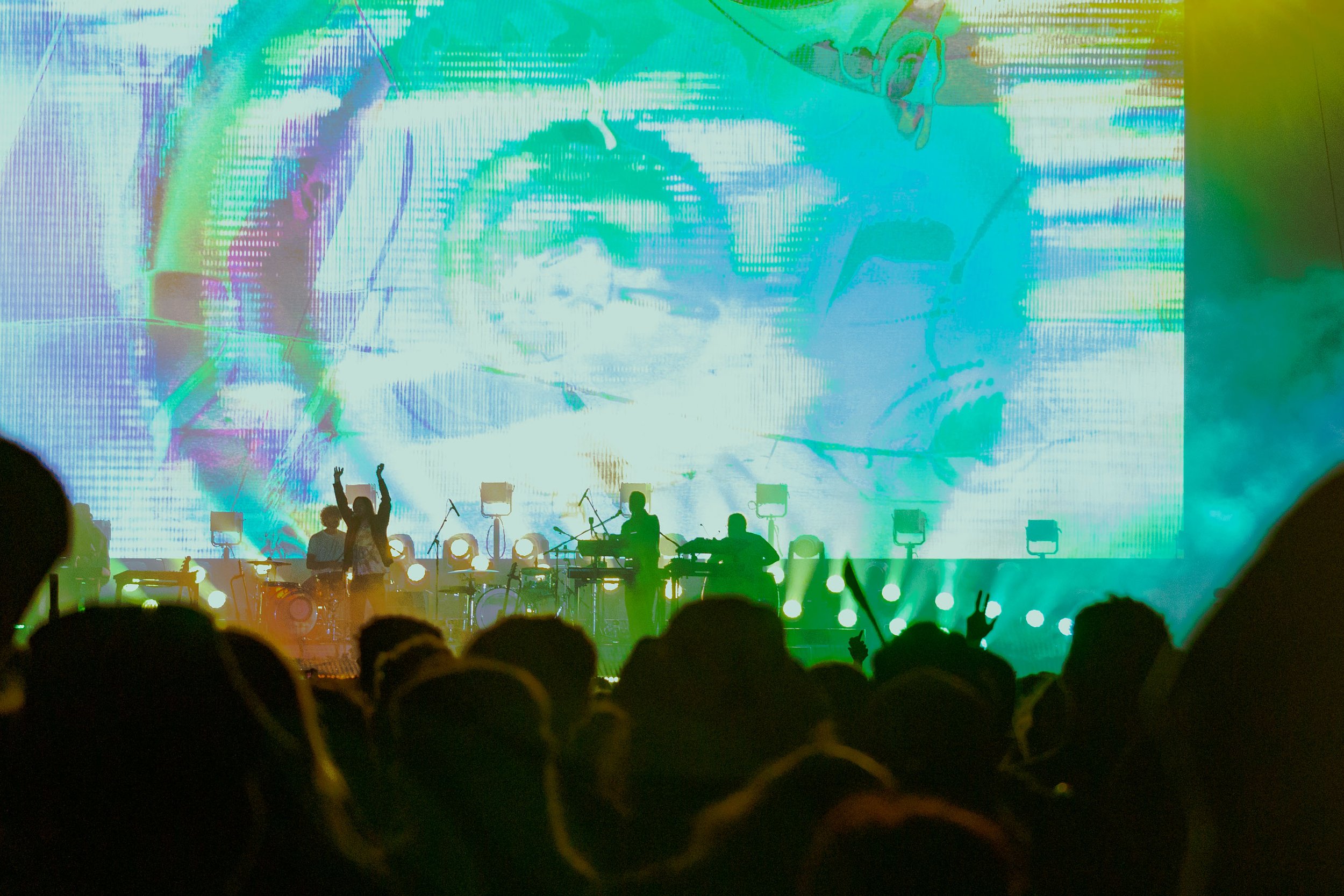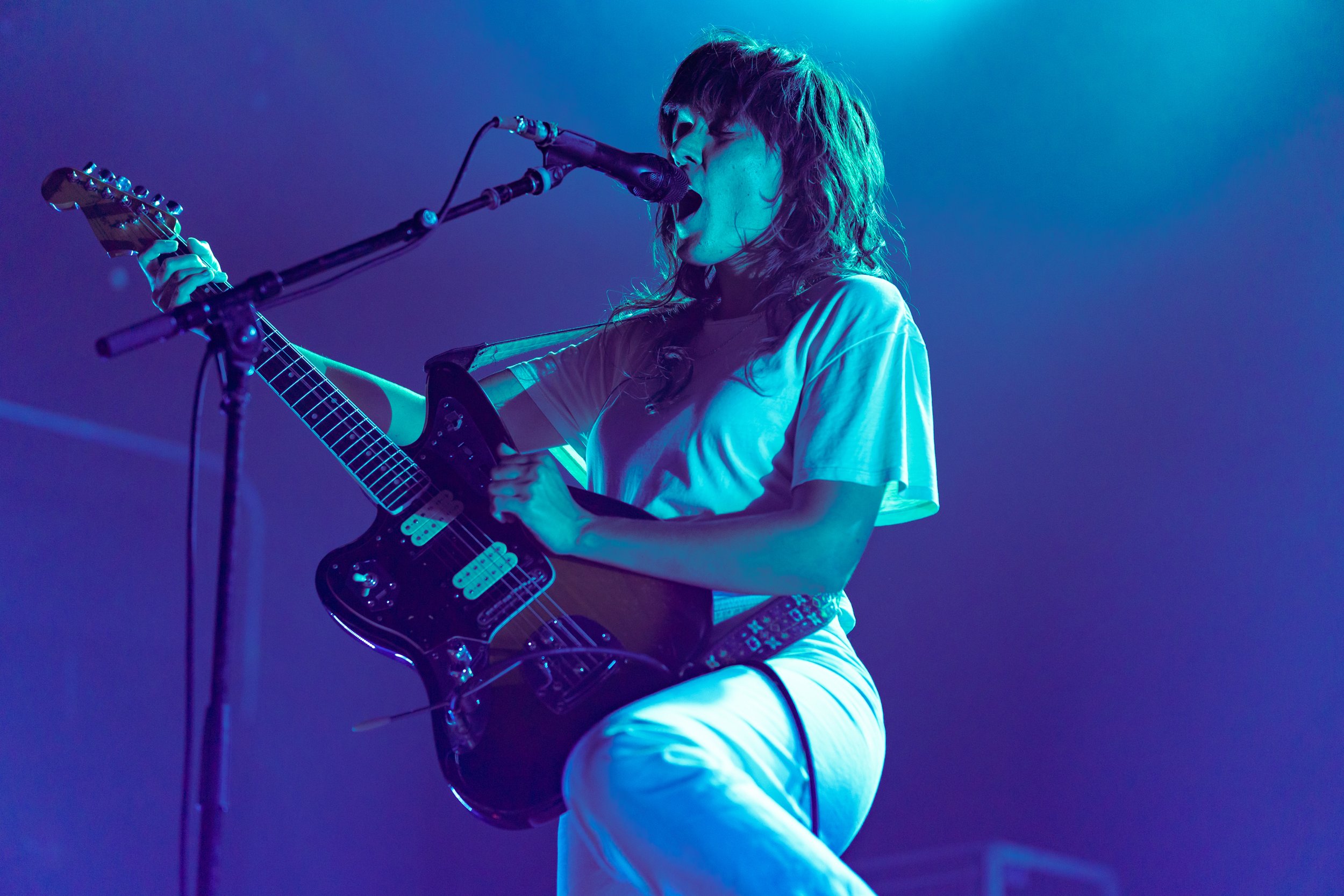beabadoobee and Plains Had Very Different Relationships with Audiences in New Orleans

beabadoobie at Republic, by Steph Catsoulis
Their recent concerts showed how sometimes a song is more than just a song.
Reading the crowd can tell you a lot about what works, and what misses. Recently at Tipitina’s, Plains, the country lovechild of solo artists Katie Crutchfield (better known as Waxahatchee) and Jess Williamson brought their slide guitars, their rack of acoustics, and their major third harmonies to New Orleans. What should have been an intimate experience was one that instead felt distant. As the crowd nodded along to country waltz after waltz, you could see in the eyes of everyone around you the desperate search for something to be excited about.
Two nights later, across town at Republic, the UK rising indie star beabadoobee took the stage to a sea of screaming just-turned-18 year olds, all of them pressing against each other to get inches closer to the woman standing on stage with a Daphne blue Fender Stratocaster. Fan art was passed to the front, along with stuffed animals, handmade necklaces, and a wrapped present that Bea took in her hands, setting it next to the stack of amps behind her. It was Beamania.
It might be unfair to compare Plains to beabadoobee, because Beabadoobee feels like so much more of a realized idea than Plains. Beabadoobee’s songs are well crafted, coming-of-age anthems that perfectly encapsulate the late-’90s-early-aughts nostalgia. Plains tried their own hand at nostalgia through classic country tunes that Crutchfield and Williamson love, but what came out of the relationship they developed and the music they made didn’t hit as hard.
Plains at Tipitina’s, by Steven Hatley
Crutchfield and Williamson walked onto the Tipitina’s stage in matching hand-crocheted crop tops with sparkles dancing across their eyes as if Godmother Dolly Parton magically appeared and applied it herself. As the duo pulled their acoustic guitars over their heads, the collective thought of the audience was, Oh this is gonna be good. Most of the crowd didn’t know Williamson and her solo work, but they knew Crutchfield and Waxahatchee, and the thought of a former punk rocker turned indie rocker turned Americana artist was exciting. Was there going to be an element of grit underneath the slide guitars? Some fuzz, some distortion in the distance that gave an edge to old country crooners, placing them in a contemporary context? Could we see ourselves in these songs, in a way that broke our hearts and hurt our feelings?
Songs such as “Problem With It” delivered on that promise. The track is rough around the edges and kicks up dust. As Williamson echoes Crutchfield's rasp through the words, “If it’s all you got, yeah, it’s all you gave / I got a problem with it,” it’s not hard to see a barren Texas landscape roll behind you in the rearview mirror. Seeing it performed live gave us all the same feeling. People in the crowd were engaged, raising their hands during the chorus, moving with the emphasized hits on the two and four, singing the lyrics back as Crutchfield and Williamson swayed in front of us, dancing as if they were in their living rooms.
“Hurricane” gave us feelings of unrest as the bass line slid up and Cructhfields voice entered into the first verse like cold clear water. “I blow into town, babe / I do my worst, it’s true / If I don’t ruin everything / Baby, I’ll come back to you,” Crutchfield sang as she glared across the audience, a glimpse of embers in her eyes.
The crowd was drawn to Crutchfield, and when she had the control, they were engaged. The peak moments of crowd excitement happened when the band played two songs off of Waxahatchee’s 2020 album, Saint Cloud. When the opening notes of “Lilacs” played, three young women on the barricade jumped up and down so high that their long hair flew into the air and the faces of people around them.
Katie Crutchfield of Plains, by Steven Hatley
But as soon as the band switched gears to a Plains song or a country cover, the energy in the room evaporated. It was almost frustrating to watch. For a second, it would feel like this room full of people could become something bigger than ourselves. We were on the cusp of feeling something. And in the next moment, that almost-something disappeared. Suddenly, the spaces between you and the people around you widened. Every crack and crevice in Tipitina’s felt deafening. There was so much space to be filled.
Beabaoobee had Republic bursting at the seams. People were chanting her name before she even walked onto the stage. During the show, the instrumental breaks in songs were filled with screams.
There were moments of Beabadoobee’s set that felt hypnotic. Bea would throw herself onto the stage, strobe lights flashing, electric guitar ripping and tearing our ears with distortion, and as she keeled over the mic screaming, it felt like we were there with her during one of her darkest moments. Seconds later, she would stand up and walk around nonchalantly, her airy, sweet tone returning to her, the sound of Soak-Up-The-Sun-esque guitars soon following. In a way, it felt like a power move. Bea has a wide topography of emotions, and an ability to decide how deep she wants to take us through them.
beabadoobie at Republic, by Steph Catsoulis
The people in that room were clearly more than just invested in Bea’s emotions and her story. They identified with the 2000s teen angst Bea embodies, and the way she makes complicated feelings less scary through hooks that stick in your hair like bubblegum. But there was something deeper going on that had to do with what separates lightning in a bottle from pop stars. As people in the crowd jumped up and down, some with ribbons in their hair, some with giant barrets and crocheted hats, some holding stuffed Red pandas (Bea’s favorite animal, a girl next to me said), it became clear that people were there because they found pieces of themselves in her songs, and on a greater level, in Bea herself.
Bea’s music chronicles the transition from teenage to adult relationships in a way that feels urgent and important. Like a landscape rushing past a car window, Bea has found a way to capture moments and emotions that are fleeting and immortalize them into music that is specific to her life, but universal to her fans.
When Bea reminds herself to drink water, brush her hair, and call her brother in “Fairy Song,” the crowd of unsure twentysomethings felt that. As the melancholic, Oasis-esque guitar riff of “See You Soon” struck and washed over the crowd, a blonde person in overalls clutched their chest as if to keep their heart from falling through the floor. “I wanted to be everything you see / But I went the wrong direction, you needed some affection,” the crowd sang back to Bea as she looked out across the whole room. A person towards the back of the audience wiped tears sliding down their cheeks as we entered the chorus, “And I’m not sure why but I will see you soon / I guess I have to take it I’m deteriorating / Feelin’ blue.”
From struggling to take care of yourself, navigating relationships as you change and want different things, and learning how to really live on your own for the first time, Bea creates songs from moments where we are often scared shitless and turns them into music that makes us feel like we have agency.
Jess Williamson of Plains, by Steven Hatley
At Tipitina’s, the crowd was dead at Plains because what they had created did not feel very urgent to the people standing in the room. There wasn’t a pulse that the duo felt and tapped into. It felt insular. It could be seen by the way people stared at their beer cans and vaguely swayed back and forth to the loose rhythm. People were not invested in the lives of these songs, and did not see themselves in the stories they told.
Beabadoobee tapped into something that she knew we needed. She harnessed an undertow that we all felt but could never put into words, and pulled it up to the surface. With lived-in eyeliner, baggy low-waisted jeans, and an attitude that rides on the edge of sweet and sour, Bea found a way to soundtrack the growing pains of one’s early twenties and turn our moments of desperation into scenes from a coming-of-age movie.
What makes live music special is the clamoring feeling people get in their throats as they scream the words an artist wrote alone in their bedroom, and the fact that they feel as if it could have been written just for them. It’s the feeling of walking out of a show, people spilling out into the street, and realizing you can do anything, you can be anyone. Artists hit something important when we see ourselves in them. The songs that work their way into the tapestries of our lives change us.
beabadoobie onstage, by Steph Catsoulis











